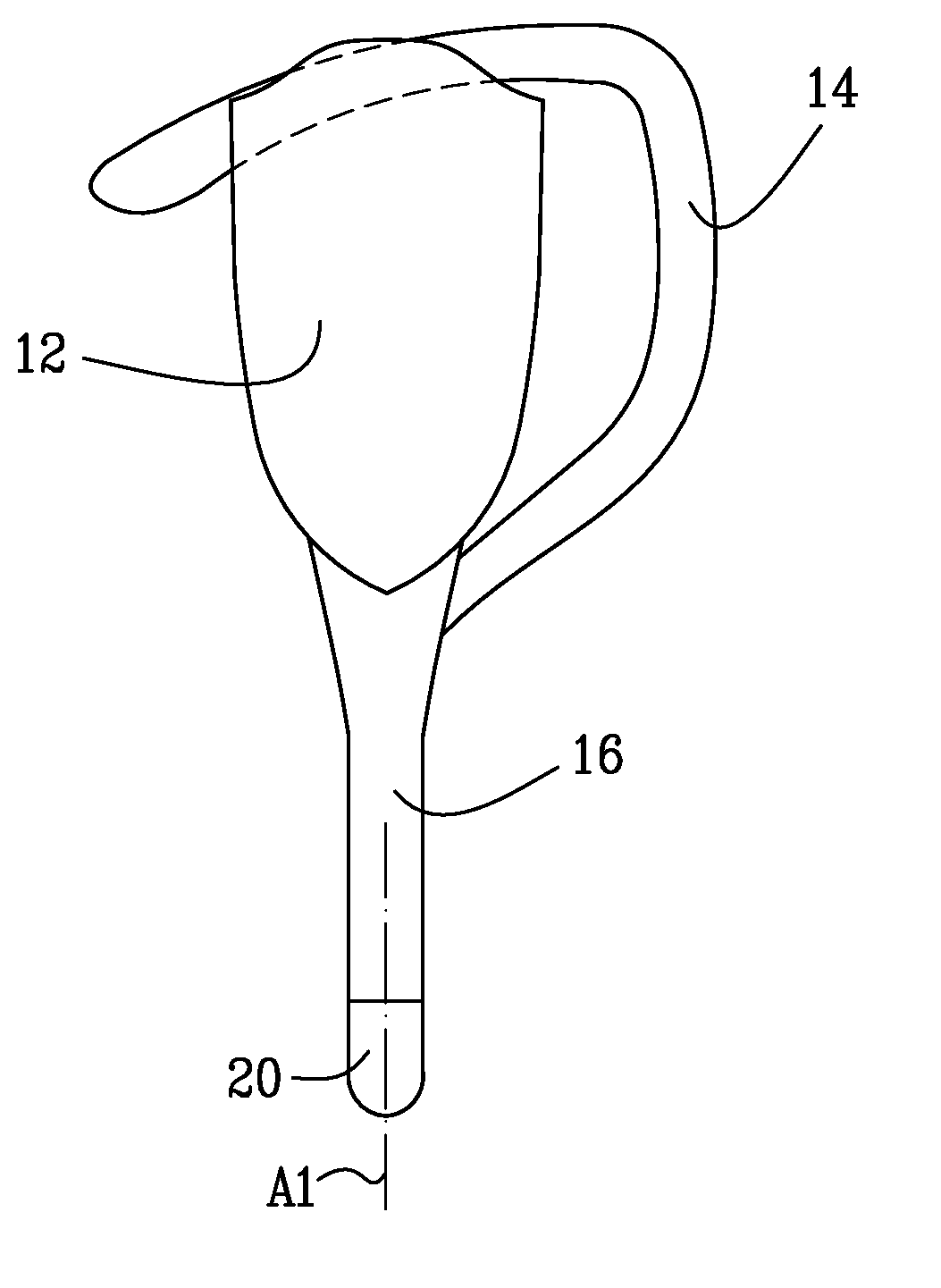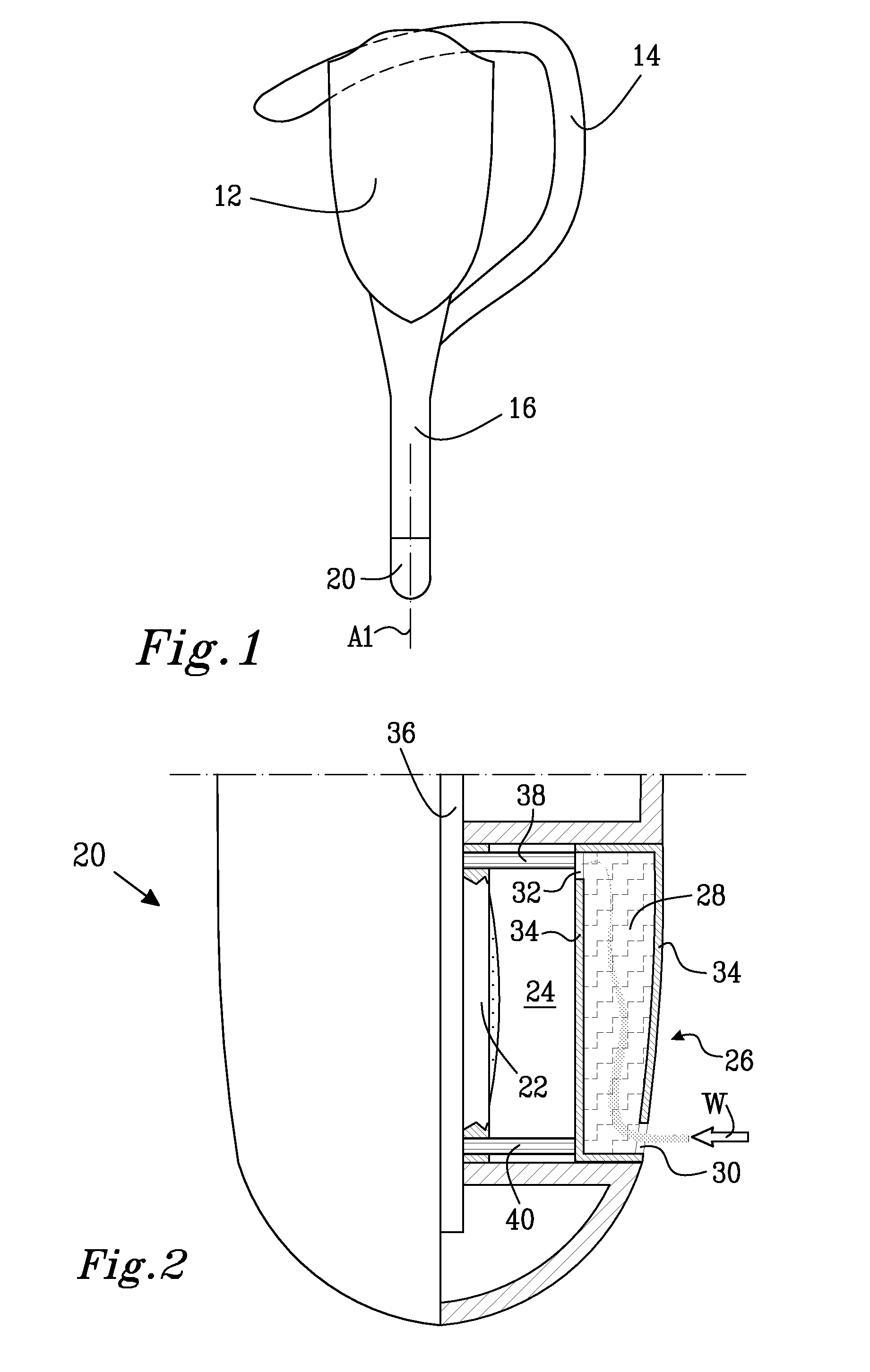Noise reduction system and method
a noise reduction and noise technology, applied in the field of sound receiving devices and microphone units, can solve the problems of unfavorable sound transmission, undesirable noise signal that interferes with the use of the microphone, and the airflow incident upon the microphone may be so substantial, and achieve the effect of superior wind noise reduction
- Summary
- Abstract
- Description
- Claims
- Application Information
AI Technical Summary
Benefits of technology
Problems solved by technology
Method used
Image
Examples
first embodiment
[0056]Barrier 26 may, in a first embodiment, be provided with an outer surface facing outwards to an area that is external of headset 10 and that is adapted in shape or conforms to, for example, the surrounding casing of second arm 16 so as to provide a substantially uniform exterior of headset 10. Barrier 26 may have an inner surface that is essentially parallel or coplanar with the outer surface and face chamber 24. Barrier 26 may have a first end provided at the first wall and a second end provided at the second wall. Barrier 26 may include an air passage channel 28 that may connect an exterior of headset 10 with chamber 24, i.e., be interposed between the exterior and chamber 24. For example, barrier 26 may have one or more openings that define an inlet 30 that is provided at the first end for interfacing the exterior and one ore more openings that define an outlet 32 provided at the second end for interfacing chamber 24.
[0057]Channel 28 may be substantially filled with a porous...
third embodiment
[0067]Channel 28 may be filled substantially as previously described with a porous, wind-reducing material and may include walls that are substantially airtight. Channel 28 may be provided along the inner and outer surfaces of barrier 26. Outlet 32 may be provided at the central top of the rounded end, while inlet 30 may be provided close to the bottom surface of chamber 24, so that sound waves and / or incidental air may travel a relatively extended distance inside channel 28 within the porous material. In the third embodiment, microphone 22 may be provided in a separate microphone chamber 46 that may connect with chamber 24 via, for example, a sound channel 44.
[0068]FIG. 6 schematically shows a perspective view of barrier 26 in microphone unit 20 according to the third embodiment. As can be seen, wind W can enter barrier 26 at the first end and exit barrier 26 at the second end.
[0069]The third embodiment may provide similar advantages to those of the second embodiment. Furthermore, ...
fourth embodiment
[0072]As shown in FIG. 7, the fourth embodiment may deviate in a number of ways from the exemplary arrangement shown in FIG. 4. For example, barrier 26 may be internally configured differently. Barrier 26 may be provided with one or more channels 28 traversing through barrier 26, for example, being defined by substantially airtight walls, and including porous wind reduction material and / or at least one turn or deflect. The number of curves or turns may vary, but for purposes of discussion, only one turn is shown. Inlets 30 associated with channels 28 may be provided at the outer surface of barrier 26 and substantially aligned with corresponding outlets 32 provided at the inner surface of barrier 26. Channels 28, for example, may be provided concentrically to axis A2. Other configurations of channels 28 vis-à-vis axis A2 and / or each other are possible.
[0073]The leading portion of channels 28 (e.g., before a first turn) that serves as an ingress to connect with inlet 30 may be provide...
PUM
 Login to View More
Login to View More Abstract
Description
Claims
Application Information
 Login to View More
Login to View More - R&D
- Intellectual Property
- Life Sciences
- Materials
- Tech Scout
- Unparalleled Data Quality
- Higher Quality Content
- 60% Fewer Hallucinations
Browse by: Latest US Patents, China's latest patents, Technical Efficacy Thesaurus, Application Domain, Technology Topic, Popular Technical Reports.
© 2025 PatSnap. All rights reserved.Legal|Privacy policy|Modern Slavery Act Transparency Statement|Sitemap|About US| Contact US: help@patsnap.com



